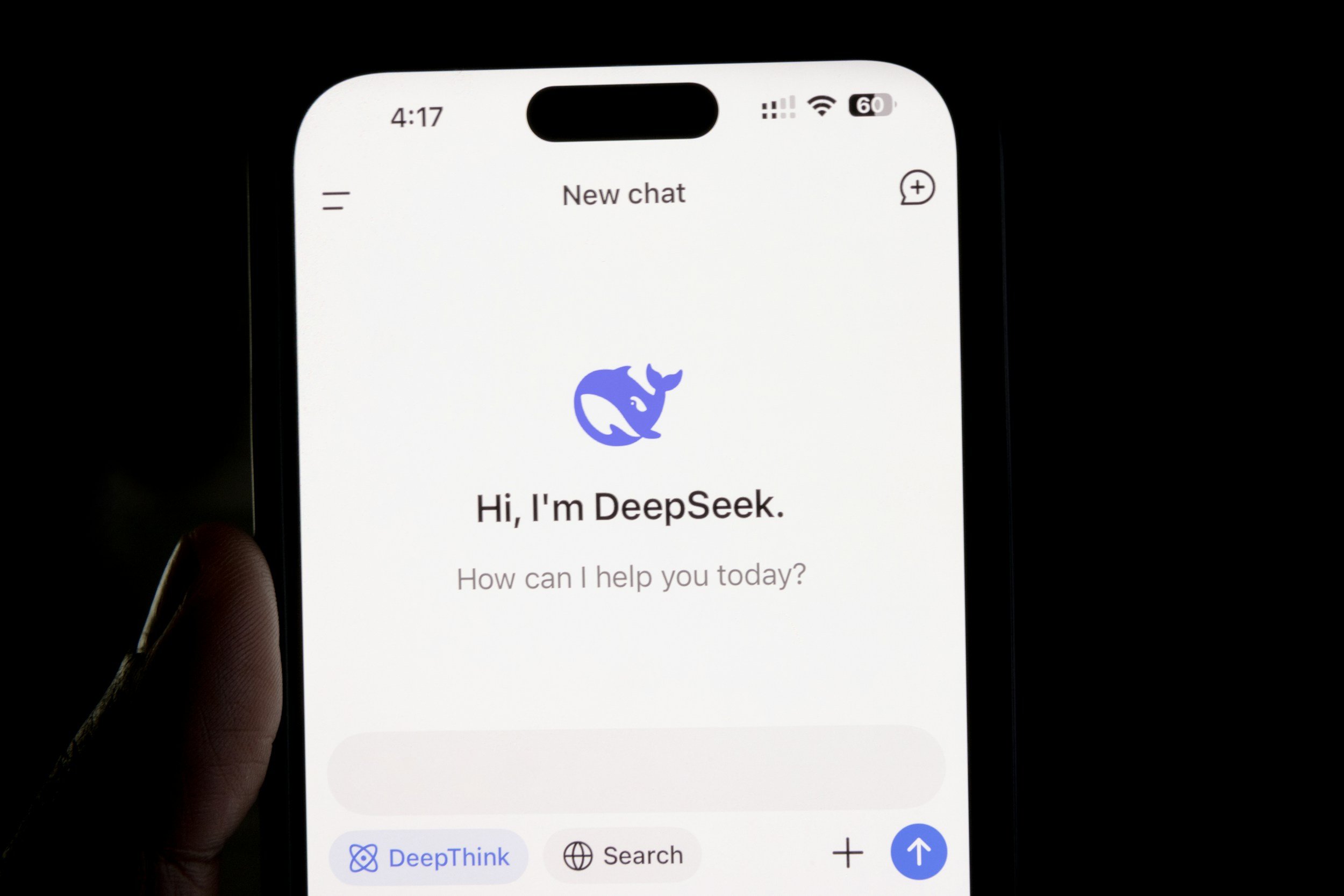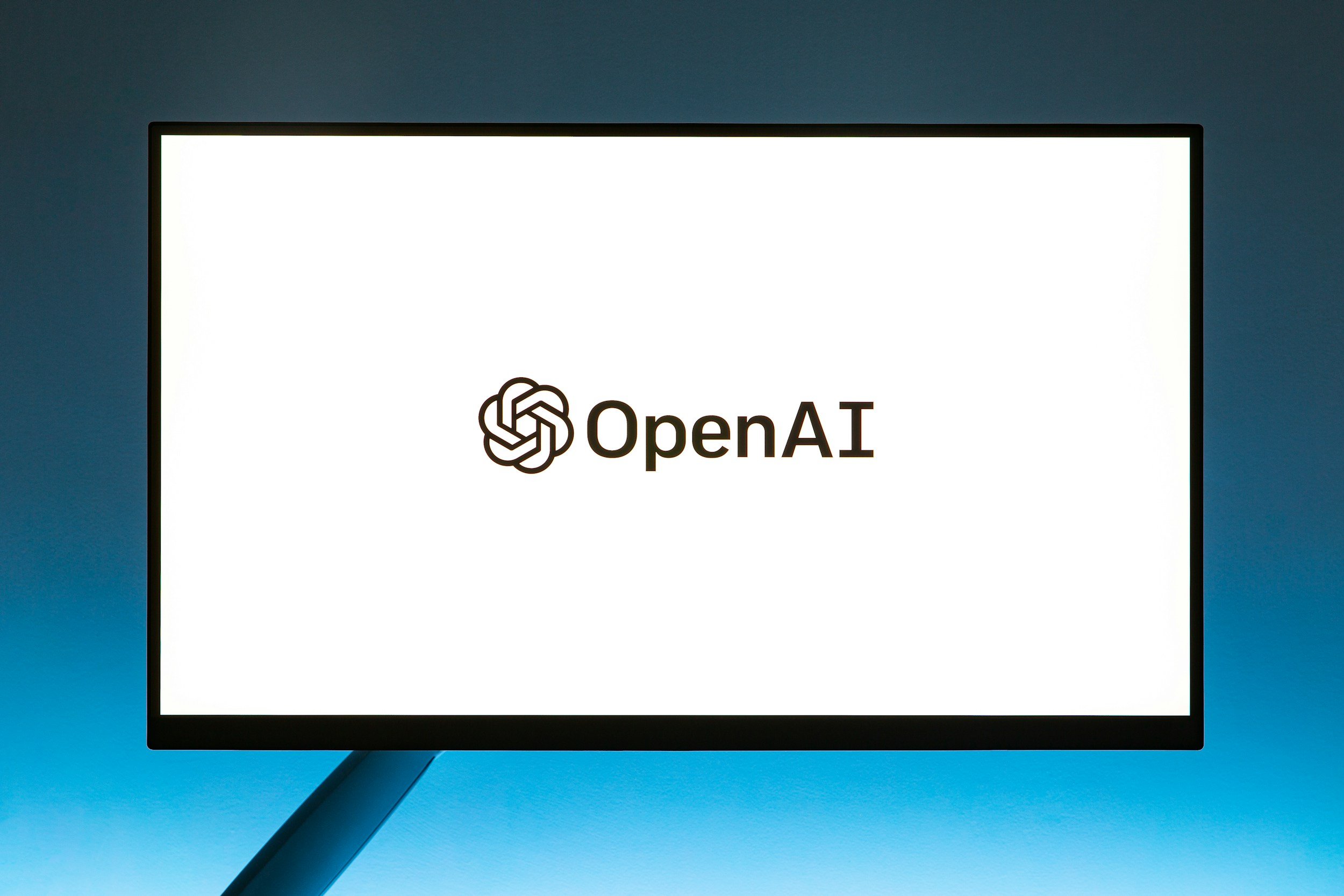Will China’s New AI Model DeepSeek Threaten U.S. Dominance?
When you purchase through links on my site, I may earn an affiliate commission. Here’s how it works.
Table of Contents Show
Only a very few people do remember that spine-tingling moment in the late 1950s when the Soviet Union launched Sputnik. The world stopped. American technological pride took a serious hit. Well, fast forward to today, and a relatively unknown Chinese AI startup, DeepSeek, is causing a similar kind of stir in the tech world. I mean, I felt it – that same "wait, what just happened?" feeling. Just as Sputnik forced the U.S. to seriously up its space game, DeepSeek's arrival is making some very powerful people in AI rethink the entire playing field.
For years, the United States has been the undisputed heavyweight champion of advanced AI. Think OpenAI, Google, Microsoft – the giants. Their models have been the gold standard, fueled by sprawling data centers and, let's be honest, obscene amounts of R&D cash. Silicon Valley has enjoyed a pretty comfy reign, cushioned by deep pockets and state-of-the-art hardware. But... what if you could achieve similar results without the blank check?
That's where DeepSeek comes in. They're claiming performance on par with their American rivals, but at a fraction of the cost. Naturally, this has sent some shockwaves (maybe more like mild tremors, for now) through the tech and investment communities. Seriously, it briefly knocked ChatGPT off its perch, becoming the most-downloaded free app on the U.S. iOS App Store. For a hot minute, more Americans were downloading a Chinese AI than the OpenAI poster child. Let that sink in.
So, the million-dollar question (or perhaps, given DeepSeek's budget, the thousand-dollar question): is this a genuine threat to U.S. tech dominance, or just a really impressive, albeit incremental, step forward?
Imagine you discovered a new type of fuel – super affordable, readily available, and it runs your car just as well as the premium stuff. Is that a complete revolution in how we power vehicles, or simply a smart way to save money at the pump? That's what we’ll dive deep (pun intended, I couldn't resist) into. Is DeepSeek a sign of a whole new era in AI, or just a much-needed wake-up call for the behemoths of Silicon Valley?
1. Background: The U.S. - China AI Rivalry - It's On
The story of artificial intelligence is honestly as captivating as any Cold War thriller. In the beginning, it was all about U.S. research labs. They were the pioneers, churning out breakthroughs like OpenAI's ChatGPT (which, let's face it, still feels a bit like magic) and DeepMind's AlphaGo, which conquered the ridiculously complex game of Go. For decades, Silicon Valley has been the undisputed leader, relying on proprietary systems, a mountain of chips, those massive data centers, and, oh yeah, billions in R&D.
I'll never forget my first trip to a data center. It was this huge, echoing room, humming with servers – it honestly looked more like something out of Star Trek than a tech facility. It really drove home the sheer scale of America's investment in AI, transforming it from a niche research area into a commercial force. These investments, from the fanciest GPUs to those state-of-the-art computing clusters, have defined what AI could be.
This long history of innovation has created a solid foundation, but it's also fostered a particular mindset: that top-tier performance requires a top-tier price tag.
China's Strategic Ambitions: The Underdog Bites Back
Meanwhile, across the Pacific, China has been playing a very different game. With export restrictions and sanctions limiting access to the latest and greatest chips, Beijing's response has been, frankly, brilliant. Instead of just throwing money at the problem (the traditional American approach, let's be honest), China has doubled down on homegrown innovation, fueled by some serious state-backed funding.
China's strategy is a fascinating blend of necessity and raw ambition. Government policies are all about achieving technological self-sufficiency, pushing for the development of powerful AI models using... well, whatever hardware they can get their hands on, even if it's a generation or two behind. It reminds me of those scrappy underdog sports movies – the team with limited resources that figures out how to play smarter, not harder. Every. Single. Move. Counts.
Key elements of China's playbook:
The Self-Sufficiency Push
A major emphasis on domestic R&D to break free from the reliance on imported high-end chips.
State-Backed Cash
Using government support to fund innovation and build cutting-edge labs, operating under tight export controls.
Policy Power
A clear, government-driven push to achieve technological parity – or even dominance – through initiatives that prioritize both security and innovation.
As someone who's been covering tech for a while, I'm genuinely impressed by how China's policies combine practicality with a bold vision. It's very much like a startup that uses constraints to its advantage, turning limitations into a competitive edge. This strategic shift is definitely reshaping the global AI landscape, and it's forcing the U.S. to reconsider its long-held belief that "more is always better" when it comes to spending.
In short, while the U.S. has traditionally relied on its deep pockets and massive infrastructure to power AI innovation, China is demonstrating that strategic government backing and a whole lot of resourcefulness can create a different – and potentially much more cost-effective – path in this ever-escalating U.S.-China AI rivalry.
2. DeepSeek’s History: The Little Startup That Could (and Did)
DeepSeek was founded by Liang Wenfeng, and this guy's background is quite fascinating. We're talking a maverick who started out crunching financial data and pioneering quantitative trading. Liang's early days involved working out of a modest apartment in Chengdu, tinkering with machine learning to get an edge in the trading world. He later co-founded High-Flyer, a hedge fund where he proved he could use AI to make seriously smart, data-driven decisions. His jump from the finance world to the cutting edge of AI wasn't just a career change but also the genesis of DeepSeek's mission: to build advanced AI models that are, surprisingly, affordable.
DeepSeek's journey reads like a perfectly executed tech roadmap. It all kicked off with early versions like DeepSeek Coder and a series of language models designed for real-world use. Each release learned from the last, adding improvements and new features. Then came the mic-drop moment: the release of DeepSeek-R1. This model isn't just another competitor in an already packed field – it's being positioned as performing on par with top-tier U.S. systems like ChatGPT and OpenAI's models, but without the insane price tag. It's kinda like watching a scrappy indie band suddenly outselling the biggest pop stars. That's DeepSeek's story.
Now, here's where things get really interesting – the numbers. DeepSeek-R1 was reportedly developed for around $5-6 million. Compared to the billions poured into U.S. models, that's practically pocket change. It's like finding out you can build a Tesla for the price of a used Honda Civic. And the cost savings aren't just a one-time thing. DeepSeek is all in on the open-source approach. Their code, technical papers, training methods – it's all freely available for developers worldwide to poke around, tweak, and build upon. This transparency doesn't just make AI more accessible but it speeds up innovation everywhere.
As a tech blogger who's watched tech evolve from clunky prototypes to the sleek, powerful systems we have today, seeing a company like DeepSeek turn limitations into a strategy is genuinely exciting. Their breakthrough is a powerful reminder that innovation often thrives not on brute-force spending, but on clever, agile thinking – and, yeah, maybe a little bit of that entrepreneurial hustle.
3. Technological Innovations: Doing More With Less
DeepSeek has pulled off something pretty remarkable: they're delivering top-tier performance using fewer GPUs, and often, older Nvidia chip models. It's similar to running a marathon in your trusty, well-worn sneakers – and still beating competitors who are wearing the latest, most expensive, high-tech running shoes. DeepSeek's engineers have fine-tuned their system to squeeze out every last drop of computing power, thanks in part to efficiency improvements like the "chain-of-thought" reasoning mechanism. This approach, which basically encourages the model to "think out loud" step-by-step, not only boosts performance on complex tasks but also makes the model's reasoning process a bit more... human.
Here's the lowdown:
Fewer GPUs, Bigger Impact
They're using around 2,000 older Nvidia H800 chips, compared to the 16,000+ newer Nvidia chips often used by their U.S. counterparts.
Efficiency is King
The chain-of-thought method improves performance without requiring massive computational upgrades.
Saving Serious Cash
Lower hardware requirements mean dramatically lower training costs.
Innovation Under Constraints: Necessity, the Mother of Invention (Again)
Here's the thing about limitations: they often force you to get creative. U.S. export controls on advanced chip technologies have, ironically, pushed Chinese innovators to think way outside the box. With limited access to the latest hardware, DeepSeek's engineers had to completely reimagine their approach – it's kinda like a chef creating a Michelin-star meal with only the ingredients they have on hand. This constraint-driven innovation has led to smarter algorithms and incredibly tight resource management, proving that, yes, necessity really is the mother of invention.
Open-Source vs. Proprietary Models: The Power of the Crowd
One of the most compelling aspects of DeepSeek is its commitment to the open-source model – a major contrast to the closed, proprietary systems that are the norm in the U.S. By making their code and methods freely available, DeepSeek is inviting a global community of developers to examine, improve, and adapt their technology. It is a little like sharing your grandmother's amazing cookie recipe and having everyone add their twist, collectively creating a cookie masterpiece.
The benefits of open-source are huge:
Transparency
Everyone can see what's going on "under the hood," which builds trust and speeds up collaborative improvements.
Community-Powered Innovation
With developers worldwide contributing, the model can iterate and adapt to new challenges fast.
Lowering the Barrier
Startups and researchers can leverage a powerful, cost-efficient AI without having to invest billions in their own infrastructure.
In contrast, many U.S. firms stick with closed systems. While these systems are secure and optimized for their specific uses, they often keep innovation locked behind layers of secrecy. This approach can limit broader community contributions and slow down the pace of improvement.
In my years covering tech, I've consistently seen that openness fuels unexpected breakthroughs. When developers are free to experiment, ideas spread rapidly – and that's exactly what DeepSeek is counting on as it takes on the established AI giants.
4. Market Impact: The Day the Market Blinked
When DeepSeek-R1 recently launched, it wasn't your usual product release; it felt more like an earthquake. U.S. tech stocks, those seemingly unshakeable pillars of the modern economy, stumbled. Nvidia, in particular, took a serious blow, with its market cap dropping by a reported 17-18 % – that's nearly $600 billion gone, just like that; and also the biggest one-day loss in the entire U.S. history. Investors, used to the multi-billion-dollar budgets of U.S. AI giants, were completely blindsided by a model built for a mere $5-6 million.
The market's reaction wasn't just about the numbers but more about questioning fundamental assumptions. Analysts and investors are now seriously rethinking the long-held belief that cutting-edge AI requires insane amounts of capital.
It's as if the financial world just discovered that you can, in fact, run a Formula 1 car on regular fuel – a concept that completely upends decades of conventional wisdom.
Beyond the immediate market turmoil, the ripple effects of DeepSeek's breakthrough could fundamentally reshape the tech landscape (if they haven’t already by now). Lower-cost AI models mean that companies – from tiny startups to established giants – might soon be able to integrate advanced AI without spending billions on infrastructure. This shift could lead to:
New Revenue Models
Companies might adopt leaner, more agile AI strategies, boosting profit margins by cutting operating costs.
Increased Competition
With access to affordable, high-quality AI, smaller players can now compete in markets previously dominated by tech behemoths, creating a more dynamic and competitive ecosystem.
Economic Rebalancing
The reduction in capital-intensive AI spending might redirect investments towards innovative applications and services, potentially leading to a more diverse and resilient tech industry.
This reminds me of the early days of the personal computer, when scrappy startups could challenge established giants simply by being resourceful and nimble. DeepSeek might be setting the stage for a similar transformation in the AI sector – a shift that could force the U.S. to re-evaluate its heavy-spending approach and embrace smarter, more efficient solutions.
5. National Security Concerns: The Double-Edged Sword of Open Source
While DeepSeek's open-source model is praised for its transparency and cost-effectiveness, it also raises some serious national security eyebrows. And it is important to be aware of the statistics.
Censorship & Data Privacy
DeepSeek reportedly follows Chinese government guidelines, which means the system does in fact automatically censor politically sensitive topics. This built-in censorship could be used to manipulate narratives or suppress dissent. There are many examples that we can take from history, for example, we know that, throughout 2023, the Chinese government intensified its online censorship by removing over 1.4 million social media posts, and shutting down nearly 10,000 accounts that criticized its economic policies.
The Dark Side of Open-Source AI
The open nature of DeepSeek's technology encourages global collaboration, but it also means malicious actors could get their hands on it. With the source code freely available, there's a real risk that state or non-state actors could modify the model for espionage or other, let's just say, not-so-nicepurposes. According to a 2024 report by the Center for Strategic and International Studies, the number of cyberattacks attributed to state-sponsored actors increased by approximately 30 % in 2023, with a significant portion targeting AI systems.
In one test, researchers found it was surprisingly easy to bypass certain safeguards, suggesting that those same vulnerabilities could be exploited if the technology falls into the wrong hands.
6. Industry Reactions: Silicon Valley Takes Notice (and Trump, Too)
DeepSeek-R1's launch caused a tsunami of reactions across Silicon Valley, and even reached the president. Marc Andreessen was quick to call DeepSeek's breakthrough "AI's Sputnik moment" – a not-so-subtle reminder that – as mentioned earlier – even the biggest players can be caught off guard by unexpected innovation. Sam Altman, ever the diplomat, acknowledged DeepSeek's impressive cost-efficiency but remained skeptical about whether this lower-budget model could maintain a long-term competitive edge in more complex tasks.
Satya Nadella chimed in, suggesting that efficiency improvements across the board could make AI technologies more accessible, hinting that even U.S. firms might start looking for ways to trim their own budgets.
And then there's Yann LeCun, who, unsurprisingly, praised the benefits of open research and transparency, noting that an open-source approach can accelerate innovation – though he also cautioned that such openness has its own set of drawbacks.
President Donald Trump also offered his thoughts, calling DeepSeek a "wake-up call" for American tech giants. His comments highlight the political and economic significance of this emerging rivalry. I also recall that back in 2019, Executive Order 13873, which addressed securing the information and communications technology supply chain, played a critical role. Although ostensibly aimed at protecting against threats from foreign adversaries, it was viewed by many as a strategic maneuver in the escalating tech rivalry, particularly with China.
So, is DeepSeek truly disruptive, or is it just a sign of things to come, a hint that U.S. firms will soon catch up by becoming more efficient themselves? Let's break it down:
Disruptive Innovation? Absolutely
DeepSeek's ability to achieve comparable performance with fewer GPUs and older chip models throws the conventional wisdom – that cutting-edge AI requires massive spending – out the window.
Catch-Up Potential: Likely
Many analysts believe that U.S. tech companies, with their enormous resources and R&D capabilities, will quickly incorporate similar efficiency improvements. In other words, DeepSeek might be a precursor – a signal that the market is ready for a more resourceful approach – rather than a permanent shift in the power dynamic.
I remember discussing these very trends with a fellow tech enthusiast last year; he compared the current situation to the early days of the internet – where openness fueled rapid innovation, ultimately transforming entire industries. DeepSeek, in many ways, embodies that same spirit, challenging the global community to rethink long-held assumptions about investment and innovation models.
I think the industry reactions show a mix of cautious optimism and strategic rethinking. Whether DeepSeek will completely redefine the AI arms race or simply act as a catalyst for U.S. firms to streamline their operations remains to be seen.
Final Thoughts: Three Possible Futures
Looking ahead, there are a few ways this could all play out:
U.S. Reclaims the Lead
American companies will probably take notes from DeepSeek, learn how to do more with less, and then combine that efficiency with their already top-of-the-line systems. The result would be a leaner, meaner, even faster American AI. That could put the U.S. right back on top, but with a new, smarter approach to R&D.
China Leads with Open-Source
If China's approach proves it can keep up, we might see a global shift towards open-source AI. Think new international standards, all based on this idea of sharing and collaboration, instead of the usual "top-secret, locked-down" approach the U.S. has favored.
A Two-Tiered Market Emerges
This one's interesting. We might end up with two separate AI worlds. One is the high-end, super-expensive, "premium" AI (probably still dominated by the U.S., at least initially). The other is all about cost-effective, open-source solutions – think "the people's AI." This would definitely redefine competition. It wouldn't just be about who spends the most money, but who's the most resourceful, the most collaborative, the smartest. And, from my tests, that might just make them the fastest, too.
So, as we look to the future, one thing's for sure: the race for AI dominance isn't just about throwing money at the problem anymore. Nope. It's about who can innovate smarter, adapt faster, and create an environment that benefits the entire industry, not just a select few. It's gonna be quite a wild ride, that's for sure.
So, what do you think? Which of these futures seems most likely? Hit up the comments section below with your thoughts, questions, and predictions – I'm genuinely curious to hear your take! And if you want to stay on top of all the latest AI developments (and there will be plenty), make sure to subscribe to my tech newsletter. You'll get all the juicy details delivered straight to your inbox.
Thank you very much for reading! See you around.
FAQ
-
DeepSeek is a Chinese AI startup that's basically doing the AI equivalent of building a high-performance sports car for the price of a used sedan. Their DeepSeek-R1 model is showing performance comparable to top-tier U.S. models, but at a fraction of the cost. That's why everyone's paying attention.
-
It's a combination of things: using fewer and sometimes older GPUs, focusing on extremely efficient algorithms (like that "chain-of-thought" thing we talked about), and embracing the open-source model. They're basically the masters of doing more with less.
-
Think of it like sharing your secret family recipe. DeepSeek makes its code, research papers, and training methods freely available to anyone. This encourages collaboration, speeds up innovation, and lowers the barrier to entry for smaller players.
-
That's a valid concern. While open-source promotes transparency, it also means that potentially malicious actors could get their hands on the technology and misuse it. It's a double-edged sword.
-
Probably! U.S. tech giants have the resources and the talent to adapt and incorporate similar efficiency improvements. DeepSeek might have lit a fire under them, forcing them to rethink their approach.
-
It's a good analogy in the sense that it's a wake-up call. DeepSeek's emergence is making the U.S. realize that it might not be the only major player in the AI game anymore, and that other approaches (like China's) can be surprisingly effective.
-
Potentially, it means cheaper and more accessible AI technology in the future. It could also mean a more competitive and diverse AI landscape, with more innovation happening outside of the traditional Silicon Valley bubble.
-
That's the million-dollar (or maybe, given DeepSeek's budget, the thousand-dollar) question! It's too early to say for sure. But DeepSeek has definitely shaken things up and made the competition a whole lot more interesting.
MOST POPULAR
LATEST ARTICLES

























